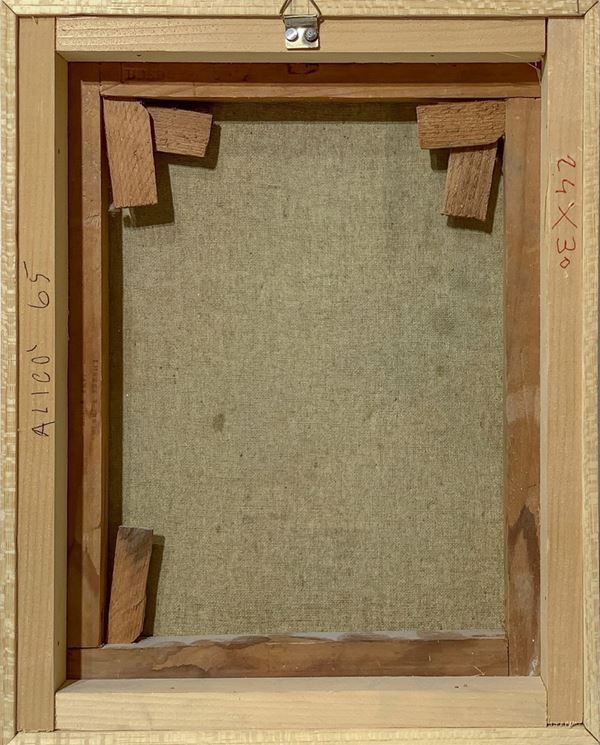156
Giovanni Alicò © (Catania, 1906 - Milano, 1971)
Abstract representation, 60's
Oil painting on canvas
24x30 cm
Giovanni Alicò was born in Catania in 1906. Self-taught painter, his approach to art is free from precondrued constraints or tracks. In 1935 he establishes First in Naples then in Milan. In 1942 he is present with a work at the XXIII Biennale in Venice, and in the The same year, he holds his first personal exhibition at the Tornabuoni Gallery of Florence. Follow, between 1948 and 1953, six years of activity in Argentina, with three personal to Buenos Aires and many participations in Collective in several national salons in the cities of La Rioja, Santa Fè, Mendoza and Rosario. Back Italy, from the mid-fifties and for the entire subsequent decade themselves were his personal to Catania, Milan, Rome and Como. It was awarded Suzzara in 1955 with the farmer's work that rests, where the painter, released by one cold realistic description and away from the typical neocubism diagrams of the first post-war period, it abandons to a painting of luministic suggestion, from the wide green, gray, landownes, supported by A dense pictorial matter defined by a thick outline line. The painting is currently preserved In the Civic Gallery of Contemporary Art of Suzzara. In 1957 he exhibited the Pincio in Piazza del Popolo in Rome, one of the most active realities in the Panorama of art exhibitions, where they also exposed Renato Guttuso and Carla Accardi. He started his artistic path depicting in his painting the carts with the colorful stories of Pupi Using Preferably Tims, then it introduces delicate colors in its palette, Vibrant, and focuses on themes pervaded by a marked spirituality. The favorites are figures Feminine, death nature and landscapes. In the fifties Giovanni Alicò approaches his style to that of Guttuso, in the field of social realism. His attention is towards a synthetic figurative painting, which It proceeds to suggestions in the general adherence to the themes of social realism. After 1960 he enters his work an important poetic made of arabesques and light and chromatic effects Shaded furniture. Since 1967, anthropomorphic characters appear on these wallpapers, sort of ghosts, which Libroise in the space of the composition. The ultimate production of the artist is instead characterized by paintings where signs, repeated geometric shapes and large color stains are made with intense and vivid colors I arrive at informal and material outcomes. Giovanni Alicò dies in Catania in 1971. After his death, an important retrospective is set up At the Palazzo della Stocky in Catania in 1973. Many of his works are present in important collections Private in Europe and America and in various art foundations.
Giovanni Alicò was born in Catania in 1906.
€ 500,00
Starting price






